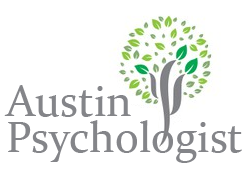Cognitive Behavioral Therapy (CBT) is a highly effective treatment for anxiety that focuses on identifying and modifying negative thought patterns and behaviors. It is grounded in the understanding that thoughts, feelings, and behaviors are interconnected, and changing one can change the others.
Understanding CBT and Its Effectiveness for Anxiety
CBT works by helping individuals identify and challenge irrational fears and beliefs, replacing them with more realistic and positive thoughts. It teaches practical skills to cope with anxiety, including stress management techniques and problem-solving skills.
Studies have shown CBT to be particularly effective for various types of anxiety disorders, including Generalized Anxiety Disorder (GAD), Panic Disorder, and Social Anxiety Disorder.
CBT Techniques and Strategies for Managing Anxiety
CBT is a psychotherapeutic approach that focuses on changing negative thought patterns and behaviors contributing to anxiety. It operates on the premise that our thoughts, feelings, and behaviors are interconnected. By altering negative thought processes and adopting healthier behaviors, individuals can reduce their anxiety levels.
Cognitive Restructuring
Cognitive restructuring in CBT involves identifying negative or irrational thoughts that contribute to anxiety. The process includes recording these thoughts, analyzing their patterns, and challenging their validity. It then involves replacing these thoughts with more balanced, realistic ones. For example, instead of thinking, “I will fail this presentation,” one might learn to think, “I’m nervous about the presentation, but I’m prepared and will do my best.”
Exposure Therapy
Exposure therapy is a technique used primarily for phobias and OCD. It involves gradually exposing the individual to the feared object or situation in a controlled environment. This exposure helps reduce the fear response over time. The process usually starts with imagining the feared situation and progresses to real-life exposure. For instance, someone with a fear of dogs may start by looking at pictures of dogs, then watching a dog from a distance, and eventually petting a dog.
Relaxation Techniques
Relaxation techniques in CBT help reduce the physical symptoms of anxiety. These include deep breathing exercises, progressive muscle relaxation (tensing and then relaxing different muscle groups), and mindfulness meditation. These techniques help calm the mind, reduce tension, and improve concentration. They are especially useful in managing the physiological symptoms of anxiety like rapid heartbeat and shallow breathing.
Behavioral Activation
Behavioral activation counters the avoidance behaviors common in anxiety disorders. It encourages individuals to engage in activities they enjoy or find meaningful, which can improve mood and reduce anxiety. This might involve scheduling positive activities, setting achievable goals, and gradually facing avoided situations. For example, someone who avoids social interactions due to anxiety might start by attending a small gathering and gradually work up to larger social events.
Each of these techniques offers a unique approach to managing anxiety, and a therapist can tailor them to fit an individual’s specific needs and circumstances.
Conclusion
CBT offers a structured, focused approach to treating anxiety that equips individuals with lasting skills for managing their symptoms. It is a collaborative therapy, requiring active participation from the individual, and is tailored to meet each person’s unique needs and goals.
Resources for CBT in Austin
- Austin Anxiety and Trauma Specialists:
- Specializes in CBT for anxiety disorders.
- Website: Austin Anxiety and Trauma Specialists
- Capital Area Counseling:
- Provides affordable CBT therapy in Austin.
- Website: Capital Area Counseling
- Austin CBT Clinic:
- Focuses on evidence-based CBT treatments for various mental health issues.
- Website: Austin CBT Clinic
- UT Austin Counseling and Mental Health Center:
- Offers CBT-based counseling services to students.
- Website: UT Austin CMHC
- Anxiety Treatment Center of Austin:
- A specialized clinic offering CBT for anxiety disorders.
- Website: Anxiety Treatment Center of Austin
These resources provide access to CBT therapy in Austin, helping individuals seeking effective treatment for anxiety disorders.
